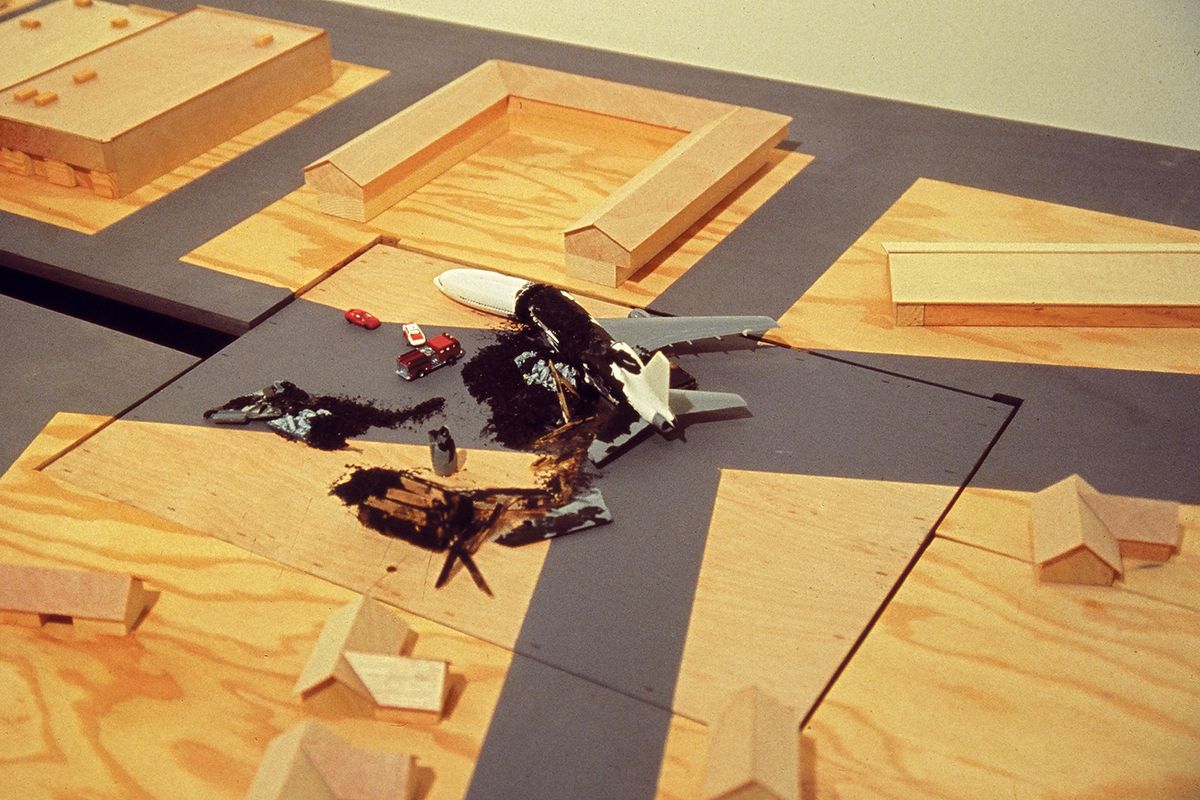With Charles Gaines 1992-2023, the Institute of Contemporary Art, Miami offers a wide-spanning survey of the artist’s more recent output; nine years after the Studio Museum in Harlem retrospective of his early work. Beginning with Gaines’s early 1990s shift towards overtly political subject matter, the show highlights his meticulous approach to questioning conceptions of artistry, systemic control and critical judgement.
Across a 50-year career, Gaines has made the translation of images, text and data through rigid and seemingly arbitrary frameworks his most enduring endeavour, allowing rudimentary algorithms to produce variations on a subject. In Gridwork, large-scale photographs of trees, faces and bodies are reinterpreted as paintings by systematic prompts, then exhibited overlaying the original image. The final work displays the system as much as the subject, present in the difference between the scattered blocks of paint and the serene, pallid photos that they are meant to represent. While these works began in the 1970s as nondescript trees, Gaines’s return to the series has seen his subject matter change to specific walnut trees from his birthplace of South Carolina, photographed on the sites of former plantations.
“He’s trying to create the conditions in which you, as a viewer, find yourself making a series of decisions before the work,” says Gean Moreno, the exhibition’s curator. “You’re being asked to consider categories like race, where the lived experience of people is translated through mechanisms into categories that distribute power socially. The way Charles is thinking of things like race and identity is with regard to how these categories are created in the first place, and to whose benefit they exist. Once we’re in the middle of engaging with them, we need to find a pocket of air where we can have a critical reflection on them.”
Alongside these gridworks are Gaines’s musical pieces, called Manifestos. Political writings from authors such as members of the Black Panther Party are transformed into compositions and played in galleries alongside their source texts, painstakingly rendered as handwritten sheet music. Gaines’s focus is again on what is unintentionally lost or gained in the translation between reality and the categories used to organise social life. “It’s an idea that the system should be getting between you and the work, as opposed to producing this work that is so perfect that you don’t have to think about it at all”, Moreno says.
In addition, several of Gaines’s sculptures have been reproduced, including a newly expanded iteration of Greenhouse (2003-23). In this work from the 2000s, a massive indoor enclosure built over a map of Los Angeles fills with smog-like smoke at seemingly random intervals, and weather broadcasts monitor trends in climate and air quality. Alongside Greenhouse are Gaines’s “disaster machines”, Falling Rock (2000-23) and Airplanecrashclock (1997-2007). In both, disasters come in a relentless, scheduled format, as a boulder attached to a grandfather clock shatters a glass pane and a model aeroplane repeatedly crashes into a miniature cityscape.
Across the entire exhibition, the juxtaposition of works seeks to emphasise the “consistency of this politics of empowering the critical faculties of the viewer”, Moreno says. “There’s a political imperative that’s not just sloganeering. It’s an encouragement to move in the world with a sense of questioning at all times.”
Charles Gaines: 1992-2023, Institute of Contemporary Art, Miami, until 17 March 2024


